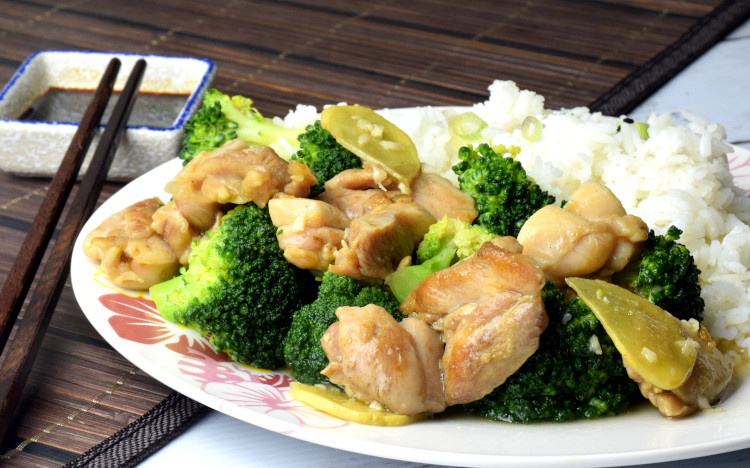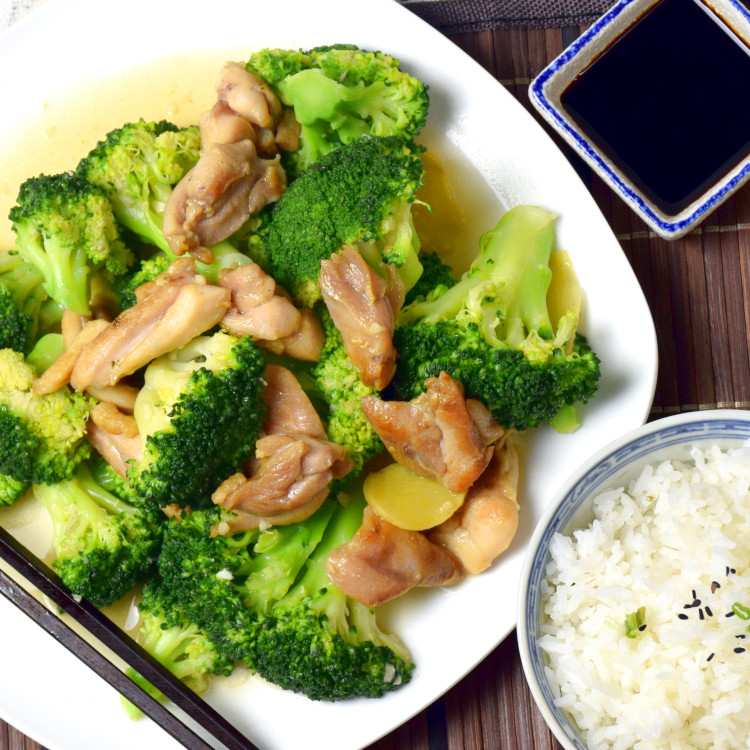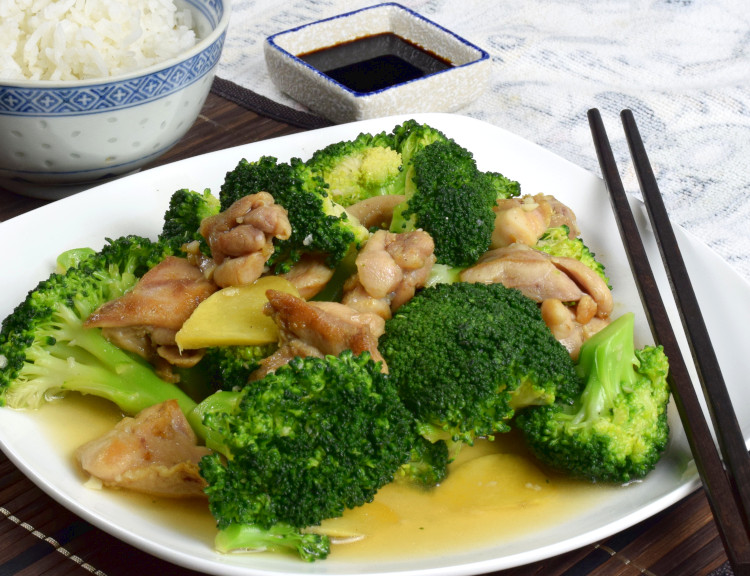Better Homes And Gardens Chicken Stir Fry Recipe
Chicken and broccoli stir-fry is a breeze to prepare, all within half an hour or less. It is the perfect dish when you are running out of time in the kitchen or have a sudden craving for the Chinese take-out.
There are many similar recipes on the internet. But I want to publish mine because it is the one that is popular among the Chinese community in Malaysia, and I am feeling proud to share it with everyone. My parents are originated from Hong Kong, in which I still make a few trips in a year to visit my family there. So you will expect that my chicken and broccoli stir-fry has a strong influence of the Cantonese style cooking.
Instead of merely bragging about how tasty it is, I would make an effort to point out a few tips that will make sure you get the best stir-fry dishes that you wanted.
Read on to get the tips!

Note: This post may contain affiliate links. Please read my privacy policy for more info. I may receive commissions for purchases made through links in this post.
Summary of the techniques that make this recipe work
- Marinate the chicken meat to make it flavorful.
- Half froze the chicken breast so that it is easiest to cut into thin slices.
- Blanch the broccoli first before stir-frying.
- Pre-constitute the stir-frying sauce.
- Brown the chicken pieces for better flavor.
- Use plenty of garlic and ginger.
- Stir-fry over high heat before dish out.
Step 1- Prepare the chicken
Chicken breast or chicken thigh meat?
Chicken breast is the favorite meat for stir-frying in the west, but Asian generally preferred the juiciness and texture of chicken thigh meat.
You néed to cut the chicken meat thinly so that it is quick to cook during stir-frying. Thin slices are more tender after stir-frying, especially for chicken breast meat.
To do this, freeze the chicken meat until half frozen. It is easier to cut the half-frozen state as it is firm enough to handle easily. You should be able to slice it as thin as you can.
Always cut the meat across the grain. This method is useful especially if you substitute it with beef. It may not be so critical for a stew that involves prolonged cooking. Cutting across the grain will make every bite easy to chew through.
Why do we need to marinate the chicken?
The chicken slices are thin. The stir-fry sauce is savory. So why do we need to marinate the chicken?
The flavor of the sauce will only coat on the surface while cooking. You will expect a different mouthfeel if you eat a piece of marinated meat. The salt from the marinade will penetrate deep into the chicken. In other words, the flavor is only skin deep if you opt not to marinate the meat.
Here is the simple marinade for this recipe, and works for most the other recipes too.
For 100g of chicken, marinate with one tsp of light soy sauce, one tsp of oil, 1/8 tsp of salt and 1/4 ofegg white.

Step 2 – prepare the broccoli
An easy way to cut the broccoli into florets.
Cut the broccoli into larger florets looks more presentable than smaller florets, in my opinion.
Cut the stalk away as close to the florets as possible. Some of the florets will fall off themselves. Snap off the remaining florets with your hand. Cut the stalk once more so that the remaining florets will either detach themselves of able to be snapped off. The broccoli florets will not look good if you use the knife to cut a large one into two.
Do not throw away the stalk. Cut away any fiber part of the stalk and slice them thinly. Broccoli stalk is crispy and tender. You can try the other related recipe Chinese broccoli which I posted earlier for a change if you like broccoli.
Blanch the broccoli
There are two ways to stir-fry the broccoli, either stir-frying it until it turns soft or blanches it in advance.
My favorite method of preparing this dish is to blanch it before stir-frying.
The advantage of the second method is the stir-frying time is cut to just half a minute. The florets will have a better appearance.
If you do not blanch the broccoli, you need about two to three minutes to stir-fry the broccoli until it turns soft, the broccoli will lose its bright color at the end.
Blanching with plenty of water produce broccoli that is crisp and clean. I set my kitchen timer for two minutes for the florets and two and a half minutes for the stalk slices. Start to blanch the broccoli when it is fully boiled. The amount of water should be at least three times the volume of the vegetables. It should be about almost cook, which will finish with a short burst of high heat during stir-frying.
Once it is done, remove it immediately and soak it in a pot of ice water. The cold water will immediately stop the cooking process of the vegetable.
Shock the broccoliwith cold water has an additional advantage. You can drain the vegetable and keep it refrigerated for a day without losing its crispness and the vibrant color. That means you can prepare it in advance.

Step 3 – Preparing an awesome stir-frying sauce
The sauce to stir-fry the chicken is another critical element of this recipe.
I use the standard seasoning items for formulating the sauce – light soy sauce, oyster sauce, sugar, salt, cornstarch, and sesame oil. I want to keep it simple as I do not want it to overpower the natural flavor of the broccoli.
Since the chicken slices are marinated, you do not need to worry that it does not have enough flavor.
The formula for the stir-frying sauce (for 100g of chicken and 200g of broccoli):
1/4 tsp of salt
1/4 tsp of sugar
1 tsp of oyster sauce
A dash of white pepper
A drizzle (about 1/4 teaspoon) of sesame oil.
1/2 teaspoon of cornstarch as the thickener
3 tablespoons of water
Most of the recipes suggest making a cornstarch slurry to thicken the sauce. The general guideline is to combine one part of cornstarch with two parts of water to make a slurry and add to the stir-fried vegetables or meat at the final stage of cooking.
In this recipe, I have incorporated the cornstarch slurry into the sauce. This method is developed over time when I work in the restaurant and realized that this is the best way to ensure every staff will thicken the sauce to the same consistency.
You can use the regular flour instead of cornstarch. Since the thickening power of the regular flour is less than cornstarch, you have to use three times the amount of cornstarch to achieve the same consistency. Furthermore, it is not as stable as cornstarch, which means the thickness of the sauce will reduce overtime. If you notice the stir-fry sauce of certain dishes on the dining table become thinner gradually over time, there is a high chance that it is thickened with regular flour.
I do not use dark soy sauce as the seasoning as it will darken the bright color of the broccoli.
Step 4 – The stir-frying process
Stir-fry the chicken
Stir-fry the chicken with some oil. Once it turns color, let the heat of the wok to brown the chicken pieces. Now you have the seasoned chicken which is full of wok aroma.
Dish out and set aside.
Cook the stir-fry sauce
Next, clean the wok before stir-frying the broccoli with the sauce. The debris of chicken and some burned garlic will stick onto the broccoli florets if you do not do so. It will not affect the taste, but it does not look good. However, if you do not mind that, deglaze with the stir-fry sauce and you will capture all the flavor. You can choose either way you like.
- Add some oil into a clean wok, saute the garlic with some oil.
- Add four slices of ginger and stir-fry together. Ginger works best for this recipe. If you want to substitute the chicken with beef, double the amount of ginger slices in this recipe. Ginger works exceptionally well with beef.
- When the garlic starts to turn golden brown, pour the stir-frying sauce into the wok. Cook over low heat while keep stirring with the wok spatula until the sauce become transparent, that is when the cornstarch is cooked.
- Combine the broccoli with the sauce in the wok. Let the broccoli absorb the flavor of the sauce.
End with the REAL stir-frying
The best in save for the last
Stir-frying over a tower of inferno is the signature showmanship of the Chinese chefs.
Return the chicken to the wok. Turn to high heat and stir-fry for a short while, about twenty seconds. Keep flipping and stirring the morsel of food so that they all touch the burning hot surface of the wok in a split of second and immediately tossed back to the air. This action is the essence of stir-frying, and the secret of generating the familiar wok aroma.
Do not overdo this step as the sauce might all dry up and the stir-fry is no longer saucy.
If you like, add a tablespoon of Shaoxing wine to boost up the flavor.
Add some sesame oil to the wok, give it a quick stir and dish up. Sesame oil is not stable over high heat. That is why I recommend to add only at the last step of the cooking.

Additional tips:
Use a good wok
Cast iron wok is best for stir-frying. A well-seasoned wok is nonstick even over high heat. It also has a high heat capacity, which means that the wok remains hot even after removing from the stove. This property is ideal for stir-frying.
Stainless steel wok is the next best thing. It is almost as good as the cast iron wok (we use it our kitchen). The only disadvantage is that the non-stick coating created after seasoning the wok will wear off quickly, which needs to re-seasoned the wok more often.
Choose the right oil for stir-frying.
Most of the Asian are using either peanut oil, corn oil and palm oil for stir-frying. These oils have a high smoking point, which means they can withstand high heat during stir-frying without worrying of breaking down. I use palm oil for stir-frying, and corn oil occasionally.
Olive oil is not for stir-frying if you want to follow how the Asian cooks. Since it has a relatively low smoking point, you will not be able to stir-fry over high heat as olive oil will turn into smoke.
The Chicken and Broccoli Stir-fry Recipe
Prep Time 15 minutes
Cook Time 10 minutes
Total Time 25 minutes
Instructions
- Cut the chicken meat into bite size.
- Marinate with (A) for 15 minutes.
- Cut the broccoli into florets.
- Blanch the broccoli florets for two minutes and two and a half minutes for the stalks.
- Place in ice water to cool. Drain.
- Stir-fry the chicken with some oil. Once it turns color, let the heat of the wok to brown the chicken pieces. Set aside.
- Add some oil in a clean wok, saute the garlic and ginger with some oil.
- When the garlic starts to turn golden brown, pour (B) into the wok. Cook over low heat until the sauce becomes transparent.
- Combine the broccoli with the sauce in the wok.
- Return the chicken to the wok. Turn to high heat and stir-fry for a short while, about twenty seconds.
- Add a tablespoon of Shaoxing wine.
- Add the sesame oil to the wok, give it a quick stir and dish up.
Nutrition Information:
Yield:
2 Serving Size:
1
Amount Per Serving: Calories: 342 Total Fat: 12g Saturated Fat: 3g Trans Fat: 0g Unsaturated Fat: 8g Cholesterol: 111mg Sodium: 892mg Carbohydrates: 26g Fiber: 5g Sugar: 4g Protein: 34g
This data was provided and calculated by Nutritionix on 6/16/2019
Better Homes And Gardens Chicken Stir Fry Recipe
Source: https://tasteasianfood.com/chicken-and-broccoli-stir-fry/
Posted by: catheysopupose.blogspot.com

0 Response to "Better Homes And Gardens Chicken Stir Fry Recipe"
Post a Comment